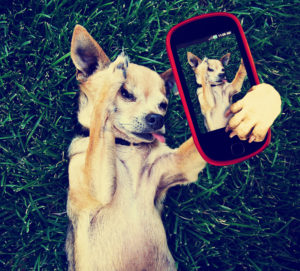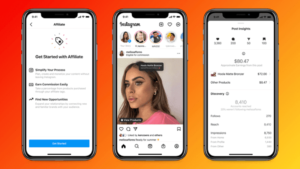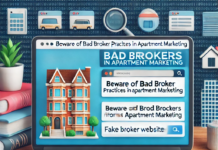Technology enabled the creator economy to flourish. Not quite the gig economy and certainly not a traditional office job, creators possess lots of tools to generate income. Although artists and musicians utilize their own creativity as a profession, the rise of tech platforms opened up opportunities for everyone. Explore the creator economy and learn how to compete to turn a passion into a side hustle or full time job.
What is the creator economy?
Part artist, part operator and all entrepreneur, creators leverage various platforms to generate a following. From there, creators continue to make art for their fans and generate a revenue stream by promoting or selling products. According to Forbes, the creator economy comprises over 2 million individuals and billions of dollars in revenue (estimated to grow to $15 billion in 2022). And, the creator economy is not slowing down any time soon.
“More than 50 million people around the world consider themselves creators, and Gen Z and millennials have flocked towards creative jobs as robotic process automation (RPA) and other factors have constrained their desire for more traditional careers. Over 33% of children between the ages of 8 and 12 aspire to be a vlogger or YouTuber, 3x more than those that want to be an astronaut.”
But, what is a creator?
In previous generations, creators were more likely known as starving artists or bar musicians or freelance writers. Individuals followed their passion and hoped to scratch out a living. But, with the rise of social media platforms, individuals have the opportunity to develop a global fan base. A creator is anyone that generates any type of content. For some, being a creator is a full time occupation. For others, being a creator is a side gig that helps supplement other income.
Finally, the creator economy encompasses all of the platforms that creators use to generate income. From cultivating a community to creating in-depth journalism, there are all types of creators. Additionally, although the biggest platforms are social media plays, there are niches for every type of creator. For example, artists or jewelry makers can leverage Etsy as their main platform (and rely on social media like Instagram for awareness). Conversely, writers can leverage Substack to create free and paid subscriptions (and rely on Twitter for awareness). The options are endless, which makes the space interesting and frightening at the same time.
Although there is some overlap, creators differ from influencers because they produce content (in any form). Influencers primarily promote content (but they might also create things or cultivate things). Creators certainly are influencers and many influencers might also create. Ultimately, what matters is how individuals can take advantage of platforms to continually engage with their audience of fans.
-
The Rise of Influencers
As social platforms gained traction, it was obvious that finding a signal in all of the noise would differ from previous media or advertising channels. In a digital world, there is simply a lot of everything. To succeed in social media, companies required something different. Companies required authenticity that drove real engagement and connections with their audience. For some companies, this was easy because it was an extension of their brand and operations. However, for others, their main focus was product or promotions or benefits, but their general messaging didn’t really connect with customers. But, for every company, the need to generate content that resonated with current and potential customers was imperative to social media success.
Enter influencers.

Influencers naturally understood the ebb and flow of social media. The ability to broadcast one to one or one to many (at the same time) is a different skill set than traditional corporate PR speak. Plus, there are simply tons of talented, thoughtful and unique individuals in the world that never had connections or a platform to share their ideas and content. However, now, they did and a new marketing channel evolved as influencer marketing quickly became a straightforward way for brands to connect with potential customers. Brands simply had to connect with an influencer and the influencer delivers the message. Naturally, influencer marketing grew as an emerging marketing trend that continues to evolve.
“Influencers drive traffic to your site, which boosts sales. However, effective influencer marketing starts before a tweet or post is shared. Influencer marketing starts with your own marketing strategy and customer profile. Prior to engaging with an influencer (just like analyzing potential celebrities for a TV spot), think about your own audience.”
The rise of influencers is important because influencer marketing solidified a business model for the underlying platforms.
-
The Rise of Instagram
Initially, Facebook and Twitter dominated the influencer economy. However, Instagram emerged as a threat (to which Facebook quickly snapped up). Now, Instagram, Snapchat and Tik Tok act as the leading platforms for influencers. Each platform plays a role in an influencer or creator’s distribution channels, but Instagram acts as the marque platform. While many traditional businesses rely on Facebook as the new Yellow Pages, young and talented individuals rely on Instagram to showcase their abilities.
Interestingly, creators and platforms need each other. The platforms need content. In particular, social platforms need lots of new and unique content to keep people returning. Fortunately, creators love to make things and need the platforms to generate awareness and show their talents. As Instagram evolved under the Facebook brand umbrella, the tools skewed towards individuality and targeted a younger demographic. The digitally native generation was only happy to oblige and share their talents with the world.
Additionally, the platforms understand their dependence on an army of individuals vs previous dominant companies that relied on a handful of large customers. For example, during the coronavirus pandemic, huge platforms like Facebook understood the need to support the small business community.
“Amid the growing concerns and realizations that the coronavirus will potentially devastate small businesses, Facebook reacted and introduced a grant program. “We know that your business may be experiencing disruptions resulting from the global outbreak of COVID-19. We’ve heard that a little financial support can go a long way, so we are offering $100M in cash grants and ad credits to help during this challenging time.”
As a result, Facebook continues to support small businesses and through Instagram focus on providing the tools creators and/or influencers need to generate a living.
-
Introduction of Creator Week
Enter Creator Week!
Facebook/Instagram launched the inaugural Creator Week in June 2021. More importantly, at the event, Facebook CEO Mark Zuckerberg remarked on the rise of the creator economy.
“Our goal is to be the best platform for creators like you to make a living. And if you have an idea that you want to share with the world, you should be able to create it and get it out there easily and simply — across Facebook and Instagram — and then earn money for your work.”
Additionally, to further support creators, Facebook noted the company would forgo platform fees until 2023 (and then charge less than the 30% standard formed by Apple and the App Store). Although Facebook and Instagram offer sufficient tools to help individuals leverage their following to generate affiliate sales or promote their own products, they realize the significance (and growth) of this market segment. So, they are doing more!
Naturally, as the creator economy expands, the competition from sites like YouTube or various podcasting platforms to niche sites like Twitch for gamers and Substack for newsletters means every platform needs to provide tools that attract and retain more creators.
How to compete in the creator economy?
Like any business, creators face lots of competition. So, how does someone compete in the crowded field and break through to develop their audience?
First and foremost, find your niche.
With so many talented individuals, take some time to develop the foundation of your brand. Although there will be others that occupy the same space, there is plenty of attention and eyeballs to succeed. But, it is important to understand the competition. For example, the fashion niche is quite crowded. From influencers that highlight various designers or styles to build a following to emerging designers showing off their new clothes, there are plenty of opportunities to collaborate and compete.

Focus on Authenticity
Also, in the creator economy, everyone has an opportunity to help each other. So, finding others that you can help (and in turn they will help you) is a great way to create a foundation for success. Importantly, once you define your niche and brand, remain authentic to yourself! It takes a long time to start a following from scratch, but the only tried and true way to cultivate a fan base is consistency and authenticity. For example, the now famous Beeple isn’t a tremendous artist, but he wanted to get better. So, he committed to making at least one drawing per day. He started over 10 years ago and released the Everyday collection in 2020. In March 2021, he worked with Christie’s auction house to sell the collection for a cool $69 million.
Christie’s notes the importance of the entirety of his work:
‘Beeple is looking at his whole body of work as it’s presented on Instagram as a kind of Duchampian readymade’
While Beeple (or Mike Winkelmann) notes, he just started and kept going.
‘This was my very first everyday. It’s a picture of my Uncle Jim, who I nicknamed Uber Jay. I probably would have spent more time on this, had I known it would eventually be part of a piece auctioned by Christie’s!’

The Beeple example is a bit extreme in his financial success, but true to the way he created a fan base. Beeple is extremely down to earth and “real” in describing his success. He remains true to the creator that started in 2007. His fans know who he is and engage with his work based on the connections he has cultivated over time.
Additionally, really take the time to learn the platforms.
Although there are a few big players that draw the most eyeballs, each platform varies and plays off each other. For example, content curators that elevate what someone needs to know in any field would likely work mainly on Twitter. For them, the image heavy Instagram platform isn’t the best use of time, but also important to hold a presence to cultivate new followers. Conversely, artists and photographers want the aesthetics of Instagram, but can still leverage Twitter to share and distribute information about their work.
In the Beeple example, as an artist that showed a continuation of pieces, something like Stories or Snapchat doesn’t make sense because it can’t build over time. However, as Christie’s noted, his work was ideal on Instagram! Conversely, other types of creators, such as writers, should leverage a different set of platforms. Something like Substack at the core allows them to own their writing and develop different business models. Then, leverage Twitter as the main awareness platform. In this example, Twitter plays a huge part in cultivating a following as a writer wants to develop their voice and perspective in front of a large audience. In return for joining the conversation, then others may check out your profile and sign up for your Substack newsletter (or blog).
The important part of learning the platforms relates to your core creation. The creator economy is an economy because creators earn money. So, as you research the various platforms, keep a steady stream of notes about the monetization efforts of each service.
From influencer marketing and affiliate marketing to subscriptions and straight sales, there are plenty of ways to monetize your creativity.
Finally, keep up to speed on new tools.
Like everything in technology, things change. In particular, platforms in the creator economy change rapidly. After all, this is a growing segment, so the platforms will compete to host your work!
Get Paid for Views
For example, both Tik Tok and YouTube recently announced creator funds. Techcrunch notes these funds aren’t for funding, but micropayments for views!
“Last July, TikTok announced its $200 million TikTok Creator Fund, which allows popular posters to earn money from their videos. In August 2020, the YouTuber-turned-TikToker Hank Green estimated that he would bring home about $700 from 20,000,000 TikTok views in one month, averaging to about 3.5 cents per 1,000 views.
Meanwhile, YouTube announced a $100 million fund last month for top creators on YouTube Shorts, its TikTok competitor. The platform pointed out that over the last three years it has paid $30 billion to content creators. Snapchat has been paying $1 million per day to creators on their own TikTok competitor, Spotlight.
For users who don’t have millions of followers, these creator funds might not pay the rent. Still, it offers an income stream based on views, outside of e-commerce or viewer tips.”
Increased Sales Tools
Not to be outdone, Instagram introduced new tools to help creators monetize their efforts during the inaugural Creator Week.

- Native Affiliate App – A lot of creators and influencers share products they love (or sponsored) to their audience on Instagram. Now, creators will have access to more products and earn commissions within the app.
- Enhanced Access to Shops – creators with their own merchandise can now link their shop to their personal profile, which allows for direct sales to followers.
- Easier to Set up Shops – creators can work with Instagram merchandise partners to create a new shop for direct commerce.
- Updates to Badges and Stars – changes to the Badges and Stars program allow creators to earn more from fans and when they achieve various milestones.
The creator economy is not going away.
From automation to self-worth, there are a wide array of reasons that drove the creator economy. And now that it is here, it isn’t going away. Fortunately, the varied interests like big brands needing to add a little authenticity to social media platforms desperate for more content, creators will continually gain more opportunities to succeed. For example, Axios notes the intense competition that large tech platforms are embarking on as they seek creator content. In particular, as platforms rollout more tools, the focus on monetization efforts are net positives for large and small creators!
“Dozens of platforms have started to roll out features that allow users to tip their favorite creators, or pay them directly. These features make it easier for individual creators to get paid — something Patreon has long facilitated for creators via subscriptions or individual content payments.”
Although the days of the starving artist may still exist, the tools are here to break that trend. Perhaps the best part of the creator economy is that it is open 24/7/365. The ease of entry means you can get started at your own pace. Or, you can experiment with an idea, turn it into a side hustle and even grow into a large enterprise. After all, Beeple started with a sketch and desire to get better at art in 2007 and sold a collection of art 13 years later for $69 million.





